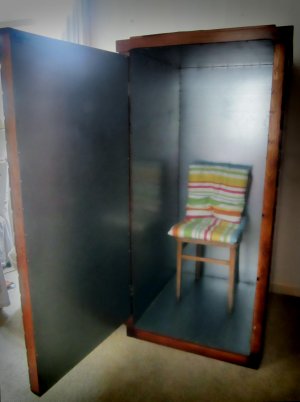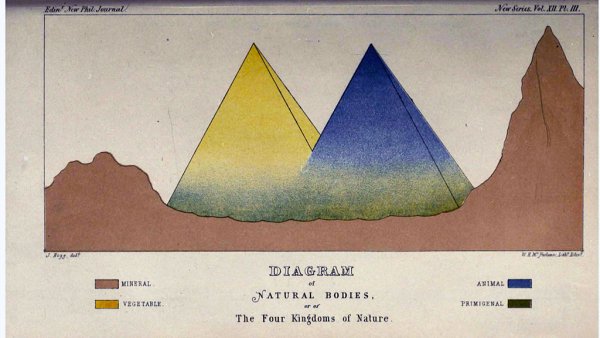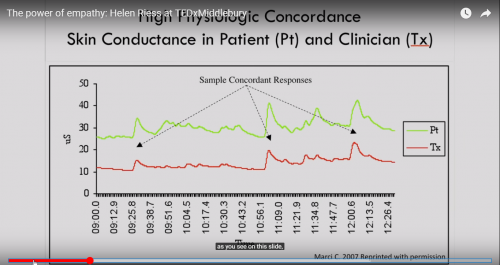video archive with all of the video we used
image archive with all of the video we used
workshop gallery - add your photos
braitenberg_vehicles_thornton.pdf
In this workshop participants will build primitive bots possessing synthetic emotions, exploring the possibility of of emotional connection between man and machines. this animated lifelikes help realize a thought experiment put forth by Valentino Braitenberg, on the matter of synthetic psychology.
We start the workshop with physical exercises using sensory deprivation techniques (and bondage) to simulate the limiting world bots perceive and react to. After a discussion and a quick soldering tutorial we go into robot building. Our bots do not use binary logic, keeping circuitry analog in the B.E.A.M* robotics spirit. The circuit itself is deceptively simple, with two halves interconnected to form a base responsive/exploratory nervous system.
*Biology, Electronics, Aesthetics, and Mechanics.
research
empathy
empathy has few definitions basically “putting oneself in another man's shoes” (Berger). or in more detail: “The capacity to (a) be affected by and share the emotional state of another, (b) assess the reasons for the other's state, and © identify with the other, adopting his or her perspective. This definition extends beyond what exists in many animals, but the term “empathy” … applies even if only criterion (a) is met.”[src]
the thing with empathy (and feelings in general) is that, similar to physical pain, it is an immeasurable quantity, we cannot put it on scale or quantify it in an objective form (this is contested, see below). also, to take onto ourselves the burden of this emotion, we must internalize the state of the other. we must take onto ourselves their worldview. but as we create and control their capacities- we are going beyond ideas of compassion, sympathy or empathy into a different domain, one we share with gods and creators. it is said that god has no compassion for his creations.
we gave them life, their internal mechanism is spread before us, so there is no room for feelings, there should be instead a form striving to perfect a techno-mechanical construction to reach a goal of perfection. their fall is our blame as makers.
"science" of empathy
but before all was Wilhelm Reich
Constant use of junk of the years has given me the habit of directing attention inward. When I went into the accumulator and sat down I noticed a special silence that you sometimes feel in deep woods, sometimes on a city street, a hum that is more rhythmic vibration than a sound. My skin prickled and I experienced an aphrodisiac effect similar to good strong weed. No doubt about it, orgones are as definite a force as electricity. After using the accumulator for several days my energy came back to normal. I began to eat and could not sleep more than eight hours. I was out of the post cure drag.william Burroughs, “junky” excerptwp
Reich argued that neurotic symptoms such as obsessive–compulsive disorder were an unconscious attempt to gain control of a hostile environment, including poverty or childhood abuse. They were examples of what he called “character armour” (Charakterpanzer), repetitive patterns of behaviour, speech and body posture that served as defence mechanismswp
Protoza and the Four Kingdoms
Physiologic Measurements
Electrodermal activity
Multiple physiologic measures have been employed in psychotherapy research, including skin conductance, heart rate, blood pressure, skin temperature, respiratory rate, muscle tension and electroencephalography marci2005.pdf
Simultaneous SC measurements from both patient and therapist were recorded throughout a single full-length psychotherapy session of approximately 45 minutes for each of the 20 patient-therapist dyads. The therapy session followed a brief standardized interaction between the patient and one of the authors (C. D. M.) to test the initial reliability of the proposed measure of SC concordance (Marci and Orr, 2006). Continuous SC level was collected using Ag-AgCl electrodes secured to the distal palmar surface of the third and fourth digits of each participant’s nondominant hand. Physiologic Measurements



![[2] [2]](/_media/pasted/20190220-222749.png)
![[1] [1]](/_media/download.png?w=500&tok=12194c)
